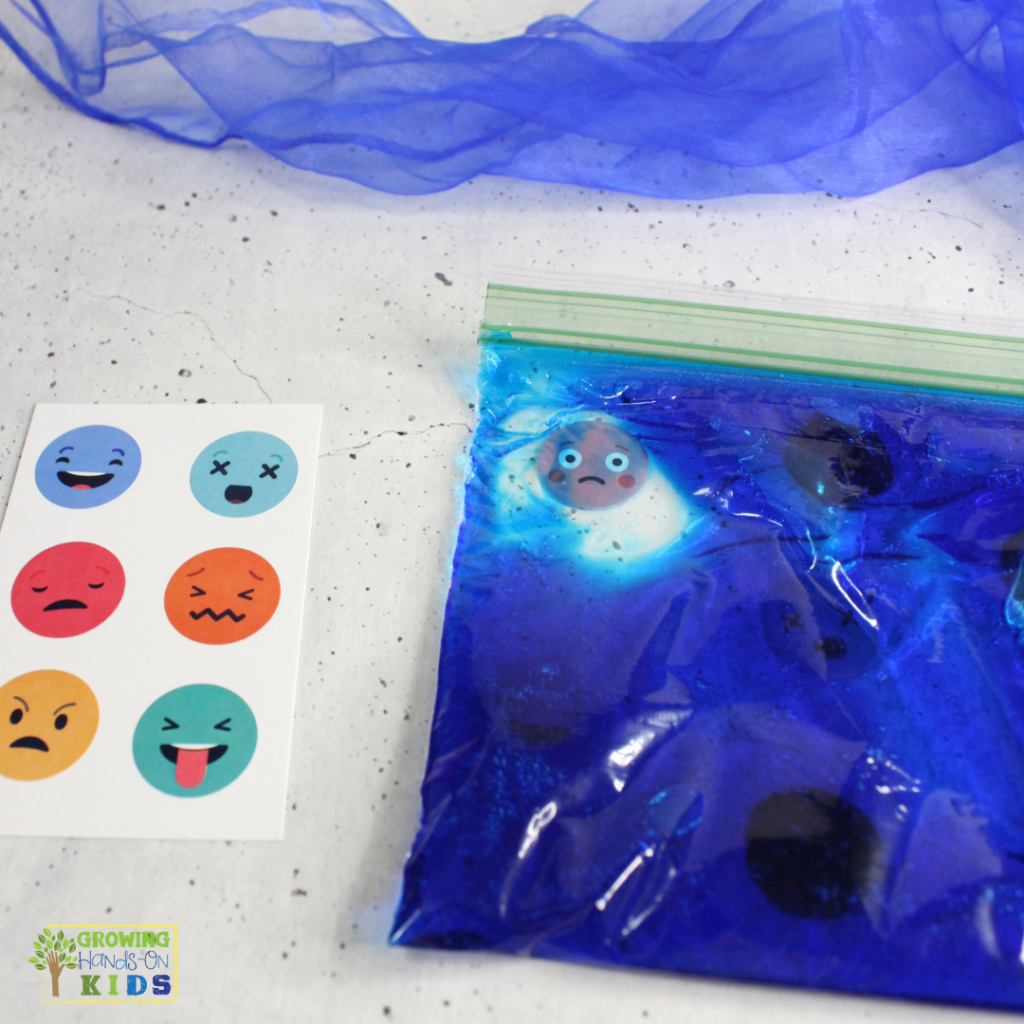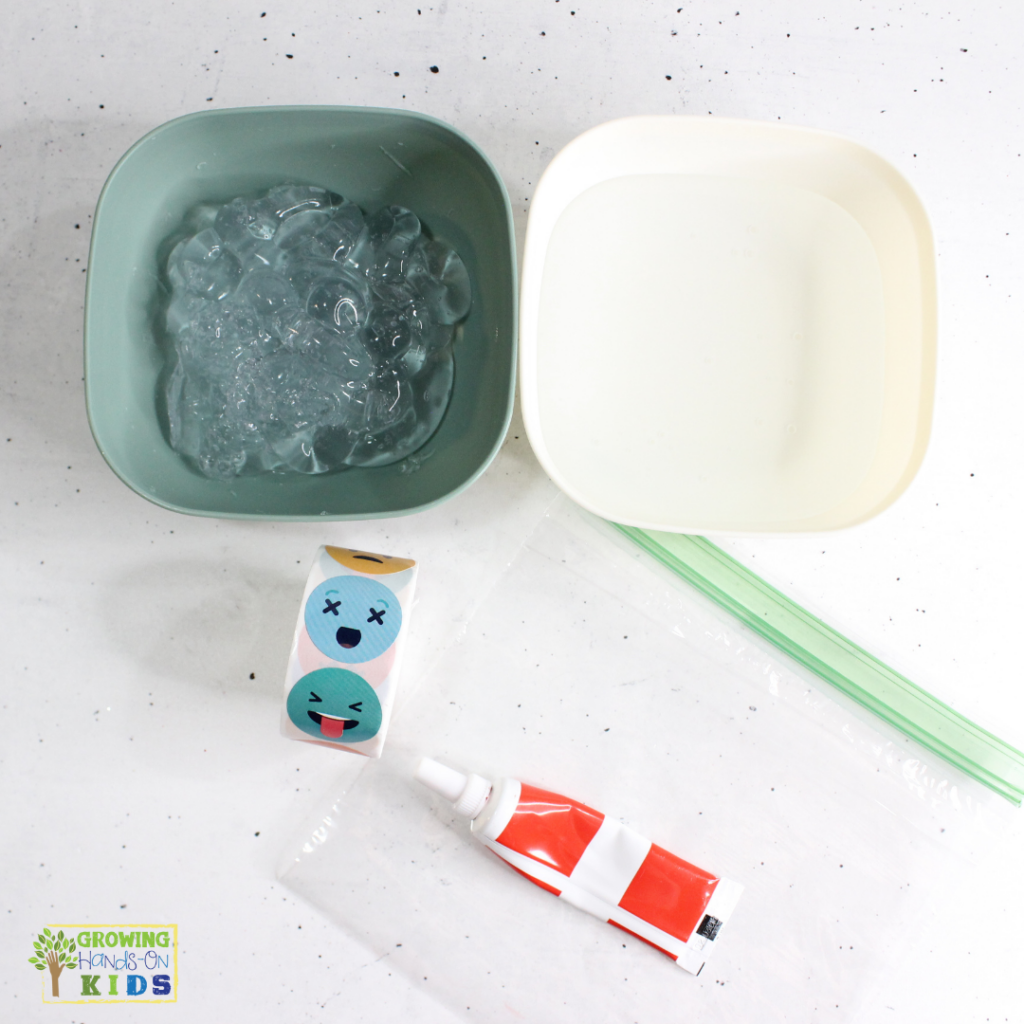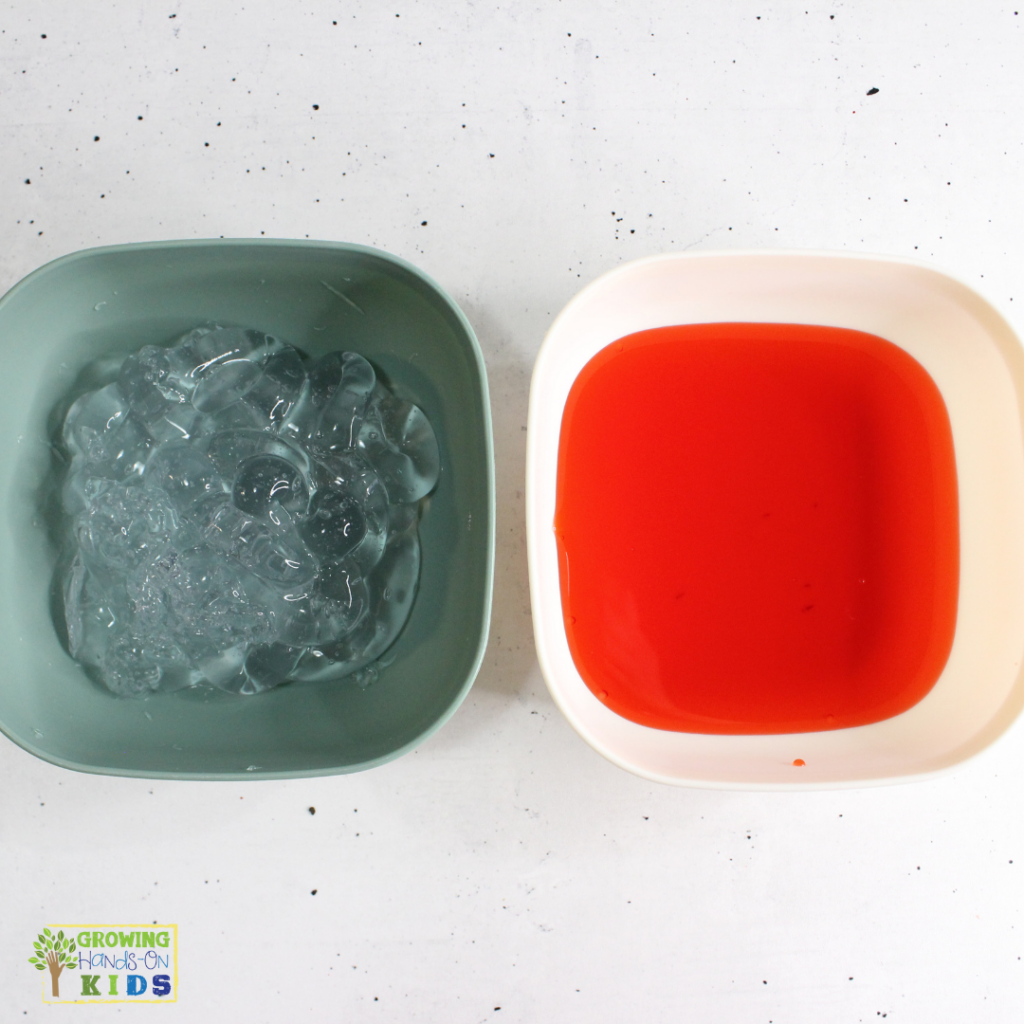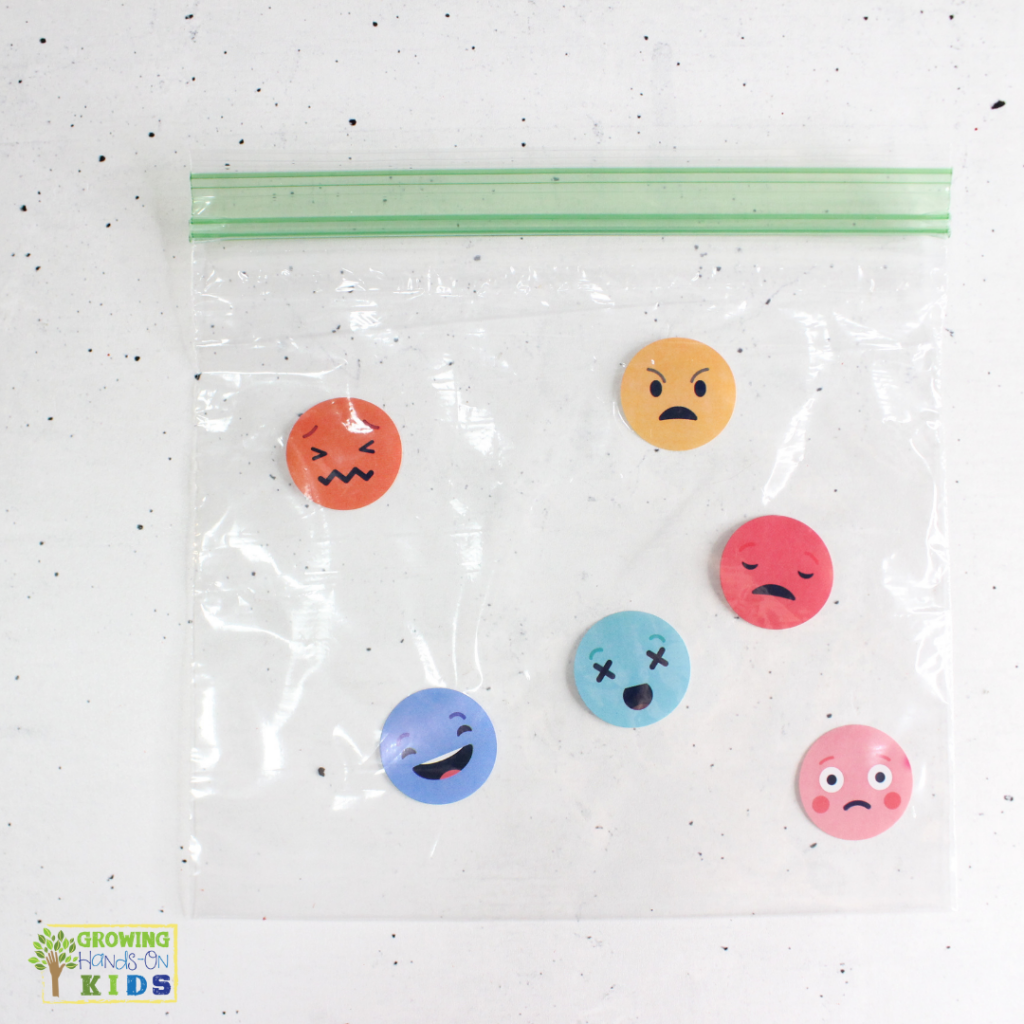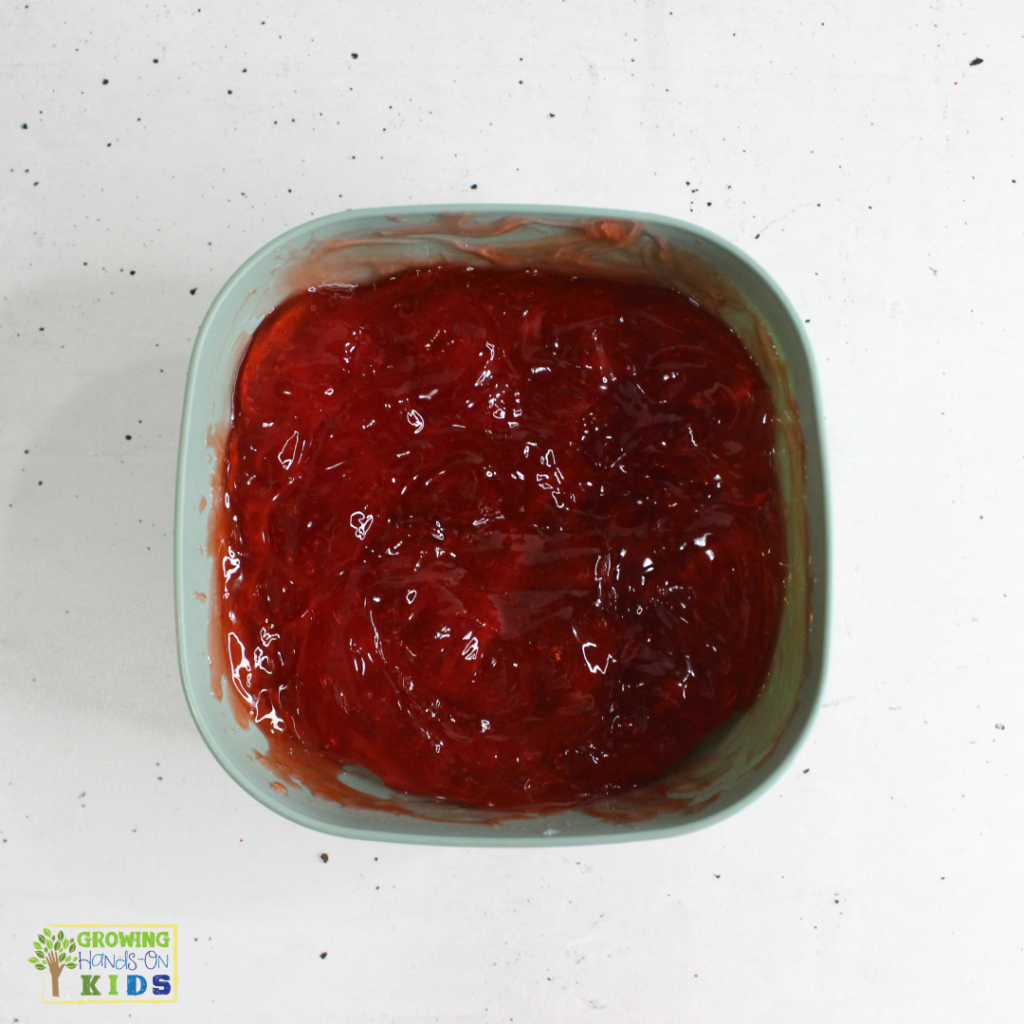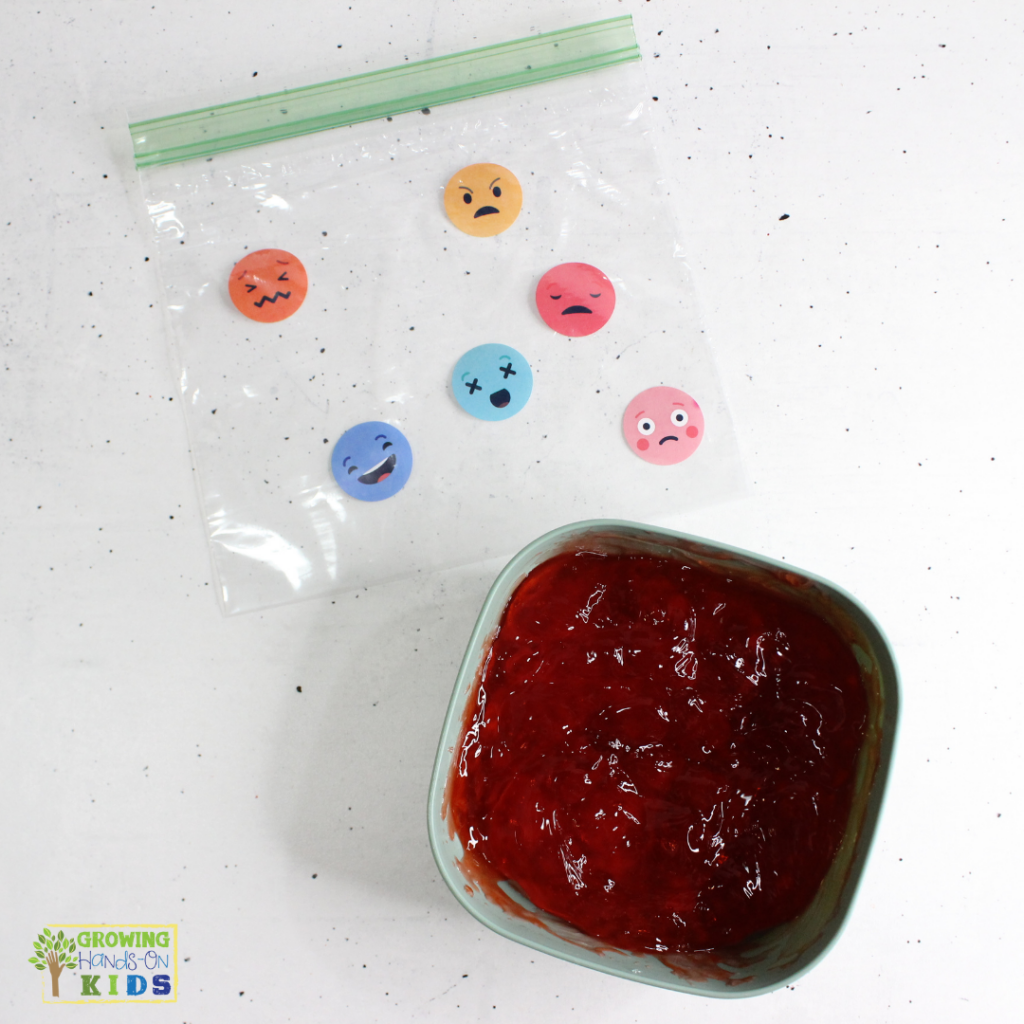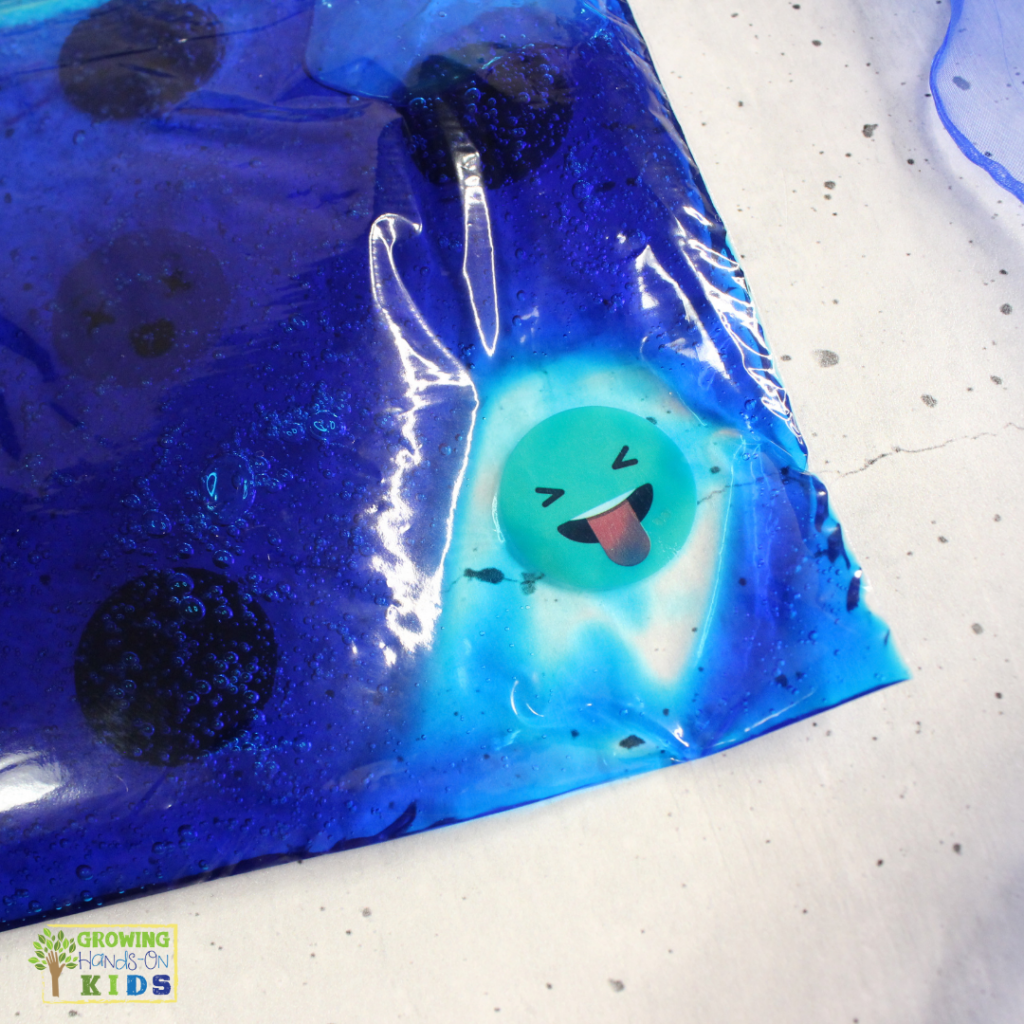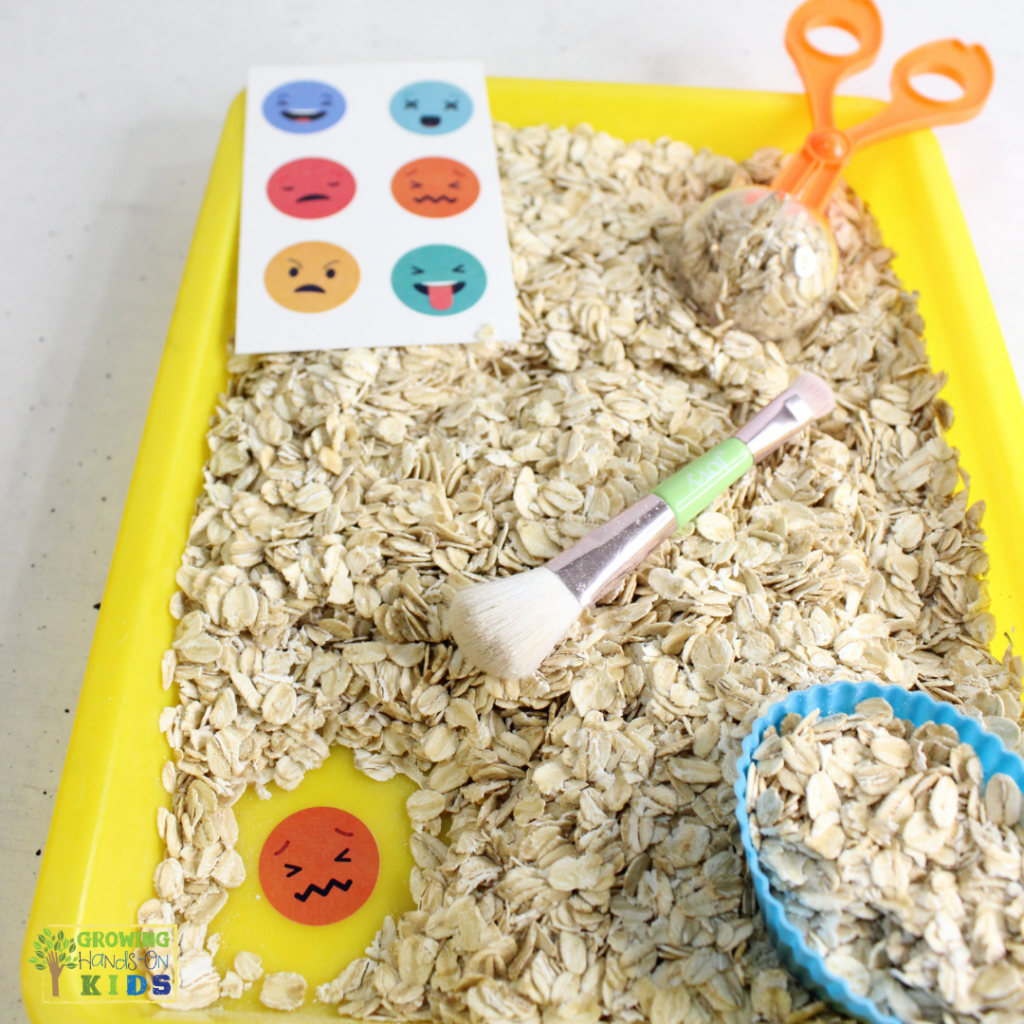How to Make an Emotions Sensory Bag
Affiliate and Referral links are used below to promote products I love and recommend. I receive a commission on any purchases made through these links. Please see my disclosure policy for more details. As an Amazon Associate, I earn from qualifying purchases.
Hands-on activities can make all the difference when it comes to helping children understand and manage their emotions. A great tool for fostering emotional awareness is an Emotions Sensory Bag.
This activity can be helpful for young children, children with sensory processing difficulties, or any child who would benefit from sensory-rich experiences, especially those under the age of 6.
Materials for Emotions Sensory Bag
- Emotion stickers
- Plastic zipper bag
- Clear gel
- Food dye
- Water
- Tape
Instructions
- Mix some water and food coloring. You want it to be dark so it’s hard to see the stickers.
- Then, mix the water with the gel. For the small plastic zipper bag, I used about ½ cup of gel and 1/8 cup of water.
- Add stickers to the inside of the plastic zipper bag.
- Then, add the gel mixture. Close the bag and seal it with tape so it doesn’t come open.
Tip: Make a bag for each type of emotion and match the color of the food coloring/gel to the color of the sticker emotion.
How to Use the Emotions Sensory Bag
Here are a few ways to make the most out of your new sensory bag:
- Emotion Check-Ins: Use the bag as part of a daily routine where your child can check in with how they’re feeling. They can choose a color bag that represents their emotion and explain why.
- Storytime Connection: After reading a story or watching a show, ask your child to use the bag to reflect on how a character might be feeling.
- Calm-Down Tool: During moments of frustration or overwhelm the sensory bag can serve as a calming tool. The squishy, tactile experience helps children self-regulate.
Benefits of an Emotions Sensory Bag
The key benefits of using an emotions sensory bag include:
- Encourage Emotional Awareness: By associating colors, textures, or objects with specific feelings, kids learn to identify and name their emotions.
- Support Emotional Regulation: Having a tactile tool to turn to when feeling overwhelmed or upset can help children calm down and healthily process their emotions.
- Foster Communication: For children who have difficulty verbalizing their feelings, the sensory bag can provide a concrete way to express their emotions.
You May Also Like:

Heather Greutman, COTA
Heather Greutman is a Certified Occupational Therapy Assistant with experience in school-based OT services for preschool through high school. She uses her background to share child development tips, tools, and strategies for parents, educators, and therapists. She is the author of many ebooks including The Basics of Fine Motor Skills, and Basics of Pre-Writing Skills, and co-author of Sensory Processing Explained: A Handbook for Parents and Educators.

